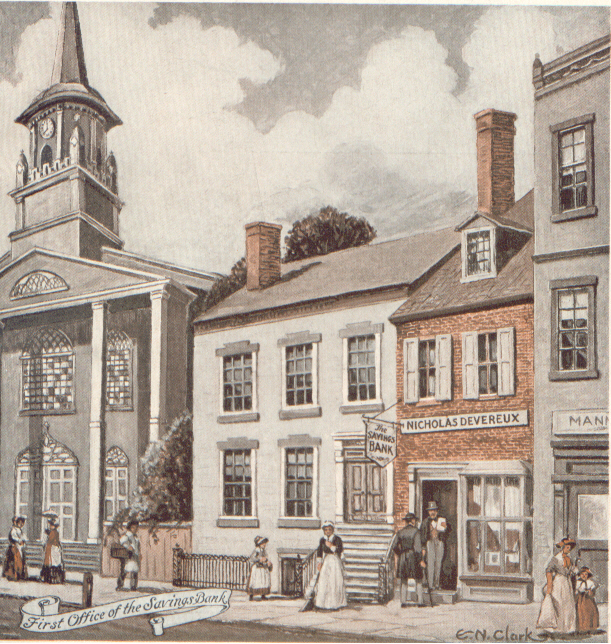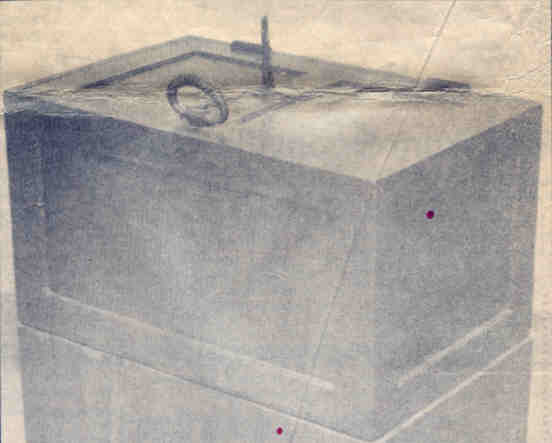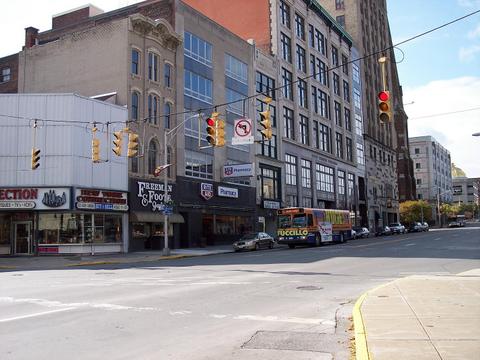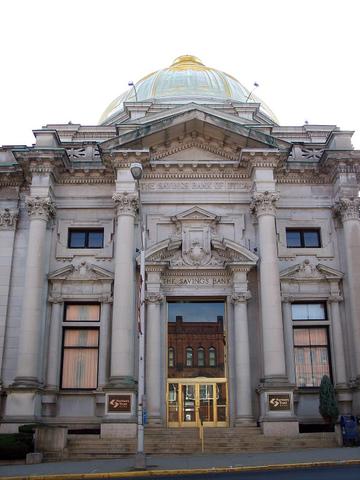 The Original store at 167
Genesee St. (Picture Courtesy Partners Trust Bank, Utica)
The Original store at 167
Genesee St. (Picture Courtesy Partners Trust Bank, Utica)Nicholas began to handle much of the business responsibilities at this time. However, John remained heavily involved, considering he owned the business.
It was also in 1814 that the brother's moved their business into a new brick building. Inside the building they put a heavy iron strong box. Fear of fire, and the new threat of crime brought on by soldiers and contractors moving through the area due to the War of 1812, convinced some Uticans they needed a safe place to store their excess cash.
 The original strongbox used by
the Devereuxs (Photo by Gary Fountain).
The original strongbox used by
the Devereuxs (Photo by Gary Fountain).
 This is a picture of the main headquarters
of Partners Trust Bank (now M&T Bank) where portraits of the Devereux Brothers still
hang (photo courtesy of Partners Trust Bank).
This is a picture of the main headquarters
of Partners Trust Bank (now M&T Bank) where portraits of the Devereux Brothers still
hang (photo courtesy of Partners Trust Bank).